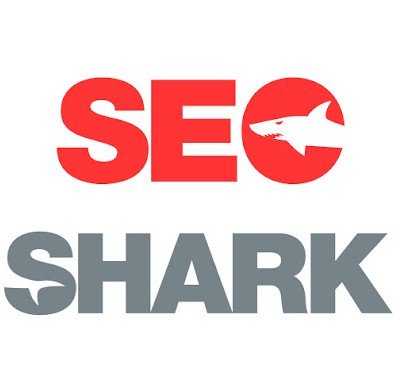How To Make Your Site Better Using Google’s Best Practices
A good website and a not-so-good website are parted with the level of satisfaction they offer to users and search engine spiders (i.e. Google’s core search algorithms which filter out the webpages and show relevant results for every search).
In order to make it to the first-page ranking, you need to follow a specific set of optimisation practices. Most people get in a quandary about the ethical and the unethical ways to get to the lucrative search engine result pages of Google.

Everybody wants to be on the first page of Google!
While the ethical practices of getting to the top disinterest people with the slow results, the unethical ways, also known as the black hat SEO, lure individuals with a quick surge in the SERP ranking.
You might feel that prodding and poking the algorithms with unethical means like link schemes, link farms, low-quality articles, and content farm etc., is a clever way to get to the top. But, in reality, you are just fooling with your website ranking as well as the user experience.
We aren’t saying that you won’t get a higher ranking with the unethical means (because you certainly will) but this ranking will not last long. Google is continuously making several adjustments to its algorithms to weed out the websites using these unethical means.
When your website is hit with one of these penalties, your ranking will drop dramatically. Currently, there are over 200+ algorithm factors that keep working to make sure that only the accurate, relevant and high-quality websites surface on the first result page of Google.
This definitely explains the inexorableness of following the ethical ways to get to the top. Have a read below as we discuss some of the Google best practices that will help you make your site better.
Create A Powerful Site Structure
A powerful site structure satisfies the cognitive craving of the human mind to find different pieces on your website at places where they are logically meant to be. All of Google’s algorithms are based on the information collected from the searchers, so if your web-visitors are satisfied with your site, Google will be too.
Google also awards easily navigable and powerfully structured sites with site links that are not just good for SEO but also boosts the click-through rate and increases targeted traffic to your site. The more pages users visit on your website, the stronger the signal sent to Google that users are loving your website.
Your site’s structure also paves way for the web crawlers to access, index and return the pages for better ranking. All in all, a site with a strong and powerful structure is always preferred by the search engine giant.
Best Practice
Have a naturally flowing hierarchy that makes navigation on your site smooth and easy. Offer different means to the user to navigate from one page to another like drop-down menus, breadcrumb lists, internal linking etc. Also, make your internal link structure strong to let the link juice flow to each page for like site ranking.

Keep Your Content Quality High
Google’s algorithms are generated keeping the user experience in mind. And when it comes to user experience, nothing holds as much importance as your content. The engagement level of your site is always a top priority.
The longer you are able to engage a visitor on your page, the better ranking would Google award your site. High-quality content is not just something which is written in a refined and polished manner, it is something that is relevant, informative and user-friendly at the same time. Original, unique, high-quality content was, is and will always be the king in Google’s eyes.
Best Practice
Make sure that you are writing the content primarily for the user so that Google can easily assess the engagement level to rank your site. Write content that is easy to read and can be easily followed in real life.
An interesting study by BackLinko revealed that the average Google first page results contain 1,890 words. So that means long-form content is also a ranking factor according to Google.
Manage The Keywords And Their Density
You cannot miss keywords when writing content for your site. Whether you are writing a creative blog/ article or general website content, efficiently researched keywords is something you should never miss. Google wants you to write the content for humans but at the same time also requires some keyword phrase to rank it against.
Keywords are an integral part of SEO and need to be well-researched and optimally used in order to improve ranking. In an attempt to get a higher ranking, many people overstuff the content with keywords, which angers the Google Penguin.
A balance of short tail and long tail keyword targeting a specific search query is ranked higher by the search engine giant. A healthy balance between latent semantic indexing keywords (70-80%) and exact match keywords (20-30%) will make your content sound natural and also improve the ranking.
Best Practice
Researching the right keywords, knowing the right value of keywords and using them appropriately in the content; there are a lot of things you should know about keywords before using them in your content.
Along with competitor research and targeting the right keywords, it is also important that you use them in the uniformly in the content and other places like the URL, headline, meta description, title tag, and image alt tag etc.
Pay Attention To Meta Tags
Many people tend to overlook the meta tags in their search engine optimisation efforts, but the meta tag description is still an integral part of Google’s ranking system. The description in your meta tag is not only essential for your users but also for the search engines.
Google uses this description of your website to create snippets as a short summary to be displayed on their results page. You may not get a higher ranking from meta tag descriptions, but Google would not hesitate from penalising or pushing down your site rank if it finds you not paying attention to these meta tag descriptions. These descriptions give the users a brief summary of what is on the page so your site gets a more targeted traffic.
Best Practice
Use the targeted keyword in the meta description tag to boost your chances of getting a higher rank. The page’s content should be accurately described in the tags along with unique tags for each page. Make sure that the summary of your page is completed within the 160 characters you get.

Get Natural Links To Your Site
Links rank the first in Google’s priority as it allows the crawlers and bots to scan and find the site on the internet. Getting natural links to your site can easily lead to higher visibility on the search results.
Google uses the practice of taking each link as a positive vote from the one site to the other. The more votes you have, the higher would be your ranking on Google. Moreover, important sites can be instrumental in increasing your visibility on search engines as well.
It is important to keep in mind that you are getting links from natural sites that value your content and not using any foul means. Link schemes or doorway pages must be avoided at all costs to prevent penalty at the hands of Google. Natural links help in your site’s indexing and ranking and so must be incorporated smartly.
Best Practice
Guest posting your rich articles on higher authority sites is one of the best ways to get natural links to your site. Write valuable content that is worth linking to and you will get more backlinks without much extra effort. Commenting, writing testimonials, promoting the content and getting reviews are some of the other ways to get backlinks to your site.
Make Use Of The Heading & Page Title Tag
Both the heading tag and the page title tag hold an esteemed place in Google’s ranking algorithm. While both have stark differences in their working procedure, a smart and calculated use of the two can result in higher page visibility and ranking.
Every page title tag needs to be unique, describing the page content with the necessary keywords. Your page title tag should be highly relevant to the page that it represents so that it can be easily indexed by the web crawlers.
The heading tags, on the other hand, are the H1 to H6 HTML tags that represent a hierarchy of your page content. Any level should not be skipped in the page to ensure a precise structure of the page.
Best Practice
The page title tag needs to be accurate in describing the page content. There should be a brief, descriptive, and unique title tags for each page on your site to ensure that Google reads your site and ranks it for the particular result.
The heading tags should be used appropriately for describing the hierarchy of the content. Make sure that you use the H1 tag only once across the page while the other tags can be used as many times as required.
Optimise The Images
Having some type of visual information on the website is essential for making it more compelling and engaging, for example you might use some free stock images available on the internet. However, your images may not be indexed by the web crawlers if they are not optimised properly. There needs to be a specific filename and an alt attribute for the image, in case, it does not get displayed on the website.
These alt texts are similar to anchor text on the page and can tell Google more about the image. In fact, Google Image Search can also return back your images as search results if they are optimised effectively with the alt text.
Best Practice
Instead of using generic filenames for the images like Image1, Pic etc., use descriptive yet brief text for your images. Add image sitemap file to let Google-bot have more information about the image. The keywords can also be added in the alt text or description. Matching the file type with the filename extension can fetch brownie points with Google!
Allow Seamless Mobile Responsiveness
Google realised that 80% of the internet users are using their smartphones to access the internet in 2017 and the graph is only going uphill with time. With mobile first indexing and the Mobilegeddon algorithm, it has certainly made it clear that the focus has shifted on ranking the websites on their readiness to cater the mobile users.
In this mobile-driven world, it has become inescapable to not simply have a mobile-friendly website but a website that is fine-tuned to offer a flawless browsing experience to the mobile users. Moreover, the Accelerated Mobile Pages aka AMPs are also a necessity for your website.
Best Practice
The best practice for providing a wonderful browsing experience and fetching a higher rank simultaneously is to create a mobile-first design. Confirm to Google’s wishes so that your website is not truncated with the next mobile algorithm roll out.
If you don’t want to go for a mobile-first design, you can simply tweak your desktop website to become responsive to all screen size like tablets, desktops, laptops, and obviously mobile phones.

Final Thoughts
While there are more than 200 factors that can help you rank higher as per the latest Google algorithms, the ones discussed above are the most preferred by the search engine giant. You’ll be lost in an unfathomable sea of low-ranking websites if you do not comply with the Google’s best practices for higher ranking.
By following these Google best practices, you can make your site better in terms of both user experience as well as search engine ranking. Keep this checklist handy to get the traffic you deserve and make your website a success.
What do you think about our checklist? Anything you feel we have missed? Let us know in the comments below! We would love to get your opinion.

We are a friendly and reliable team that pays detailed attention to your projects and management of your brand. Our team at SEO Shark has a passion for all things online. We constantly innovate using the latest professional techniques and strategies.



